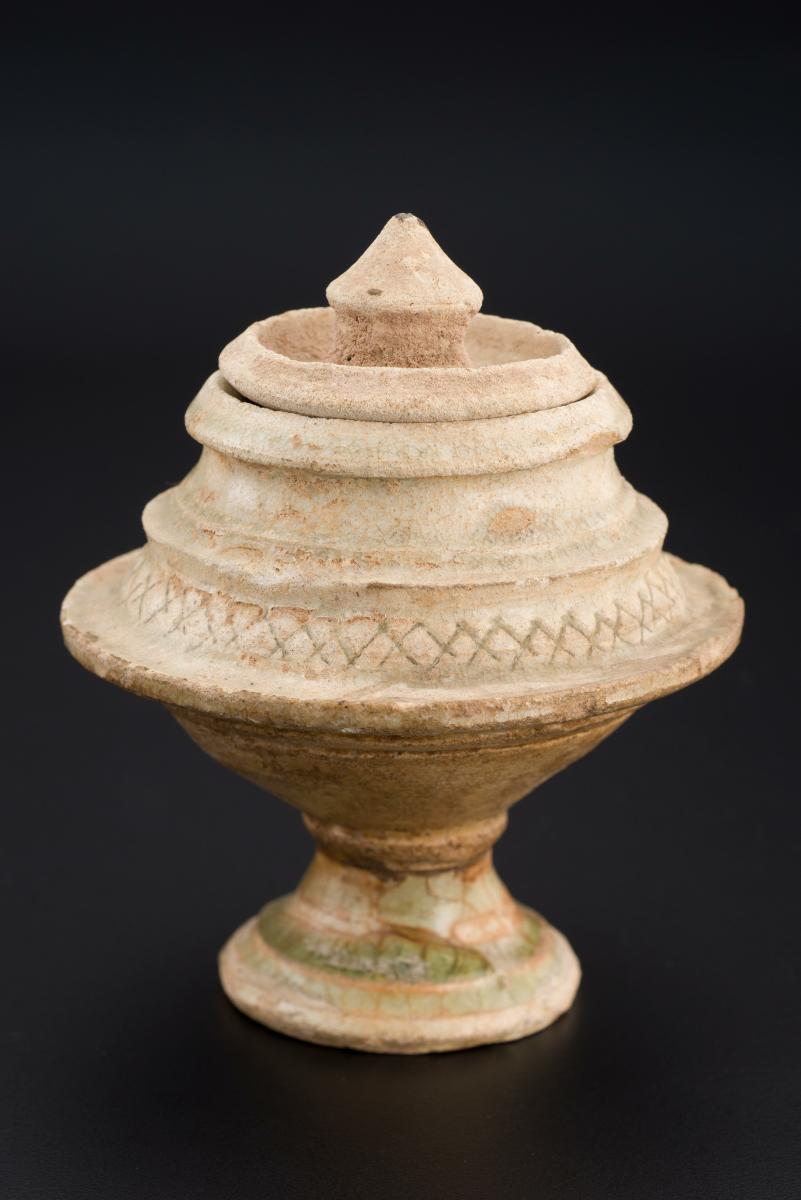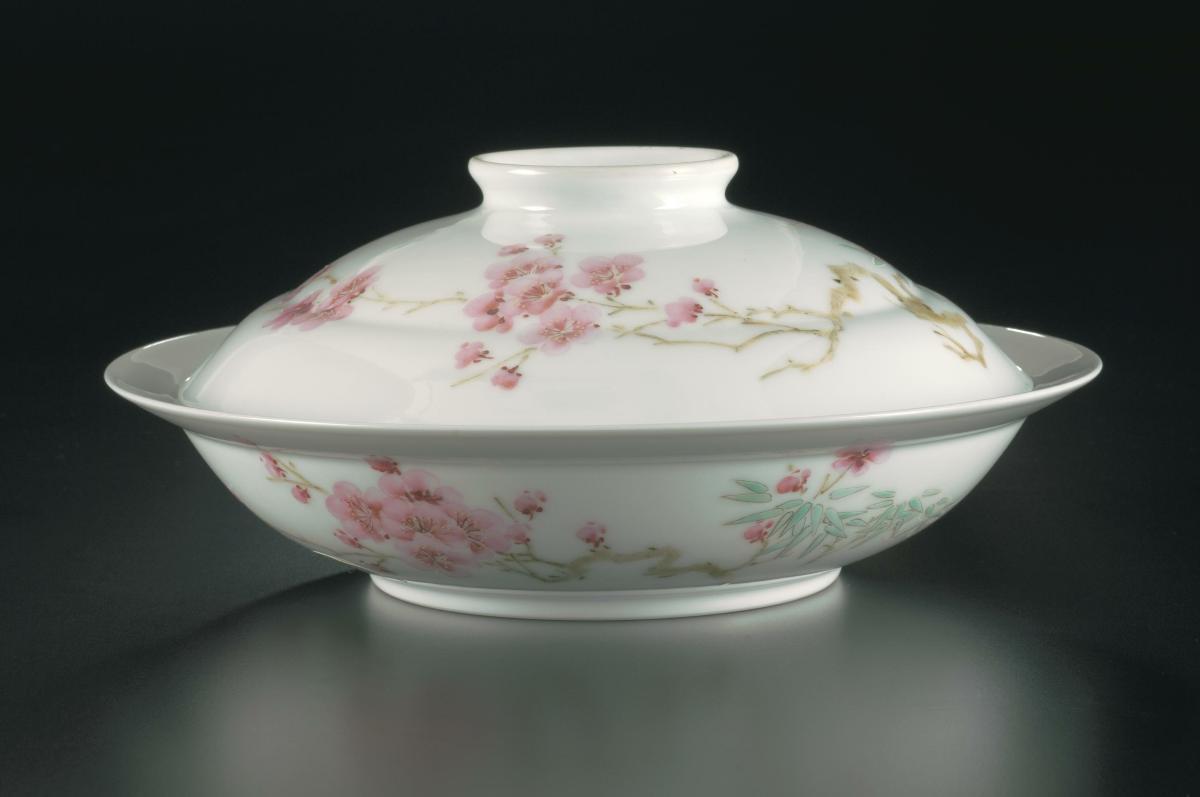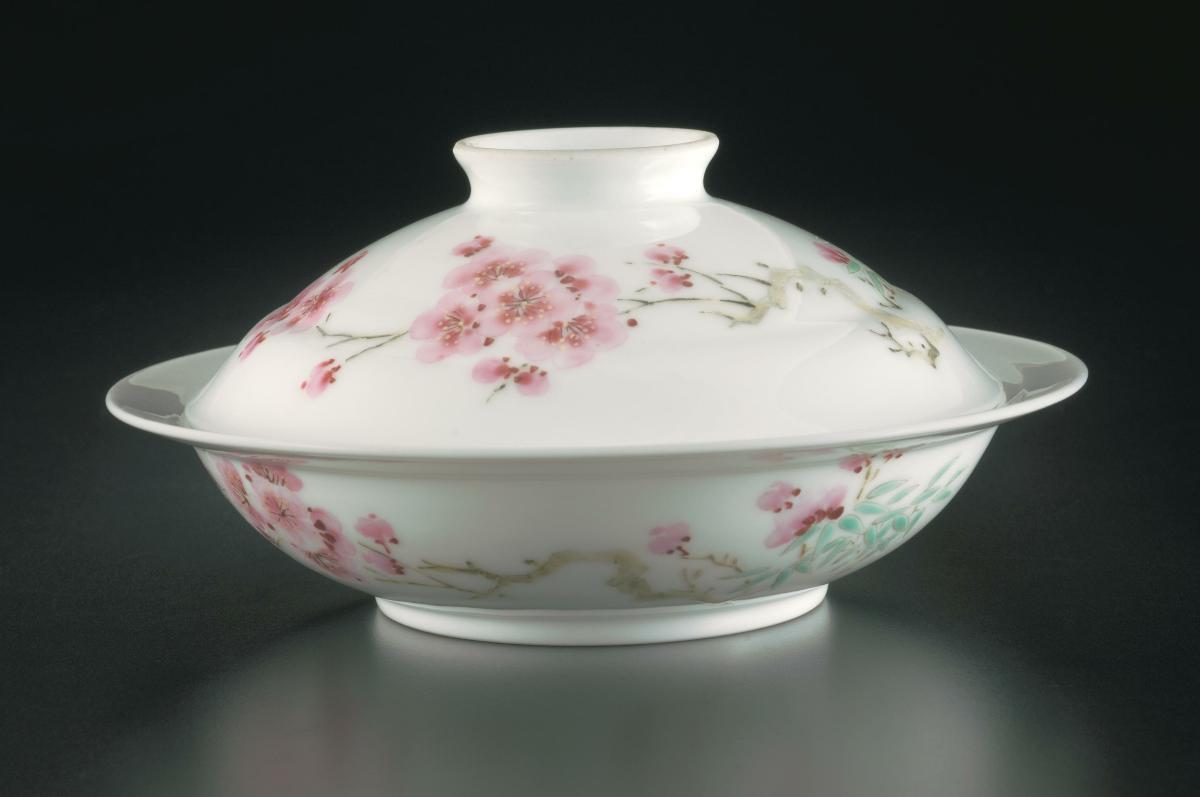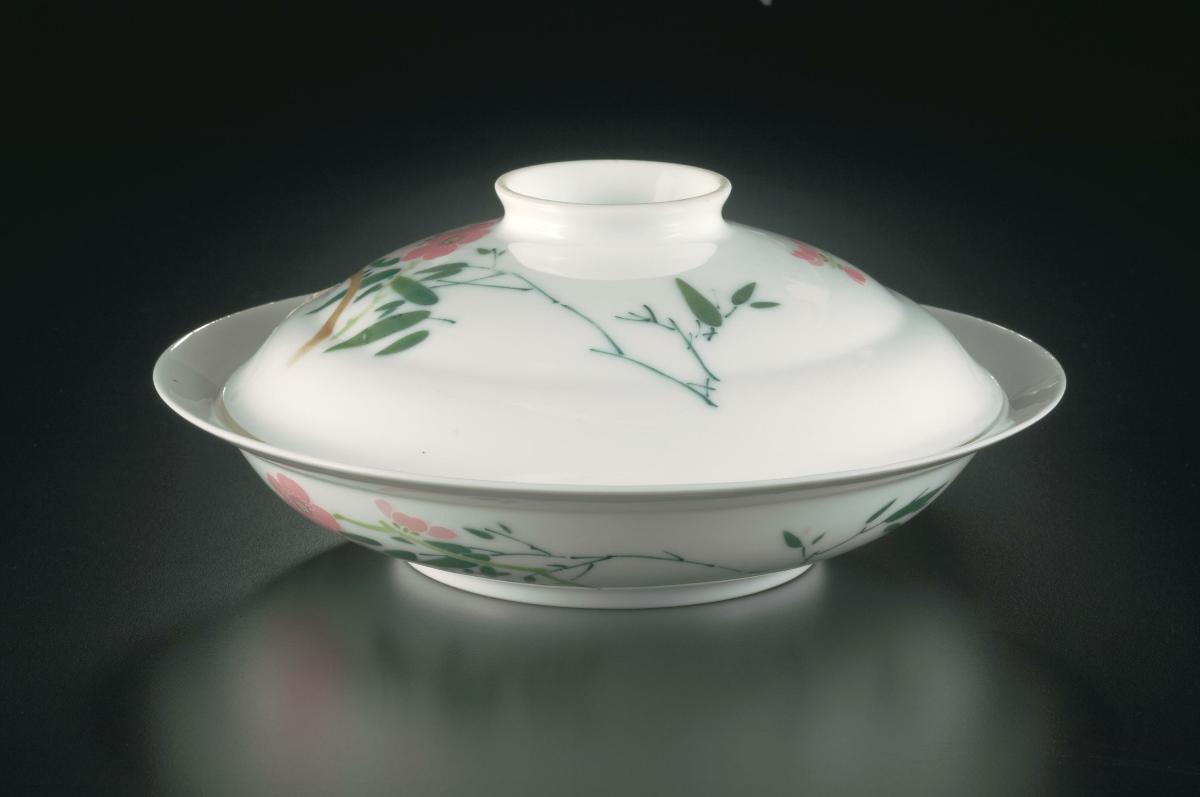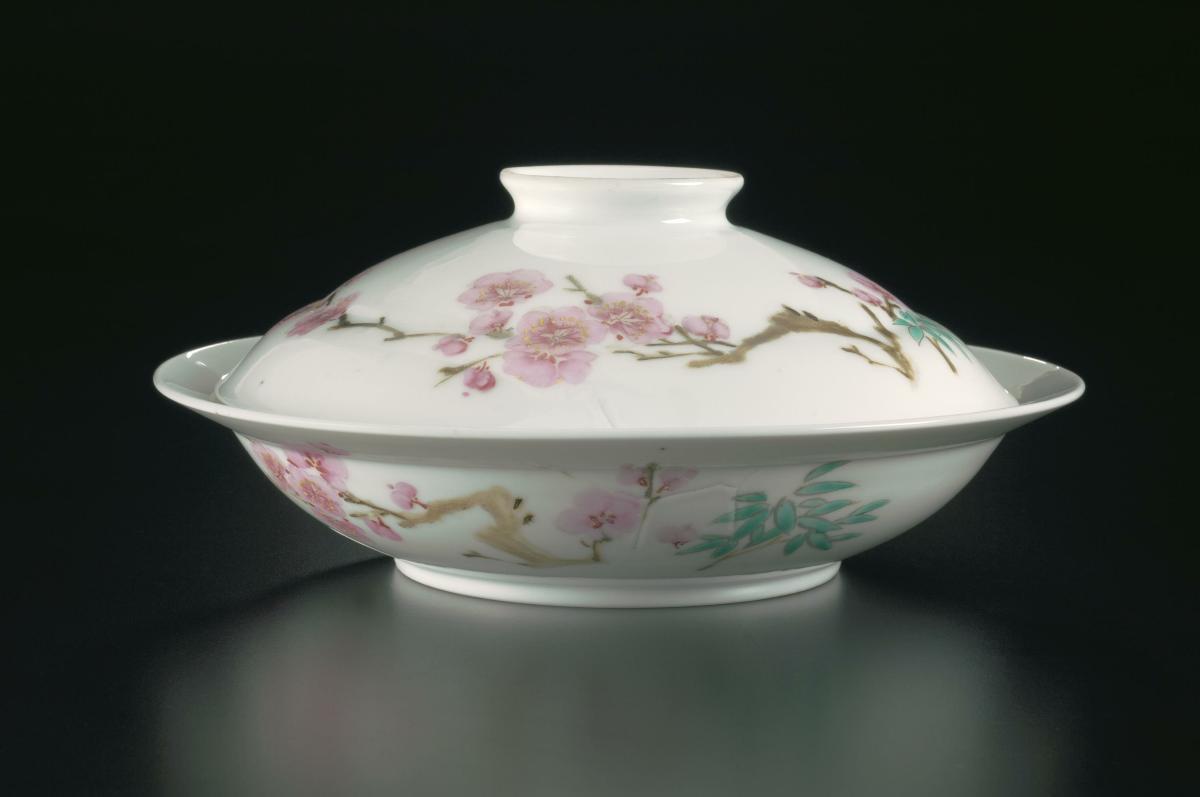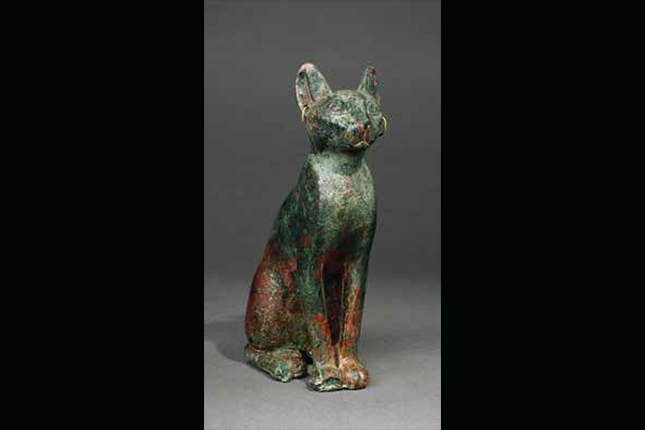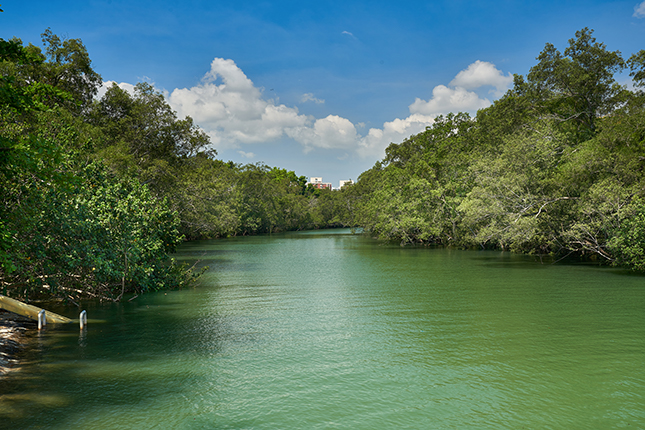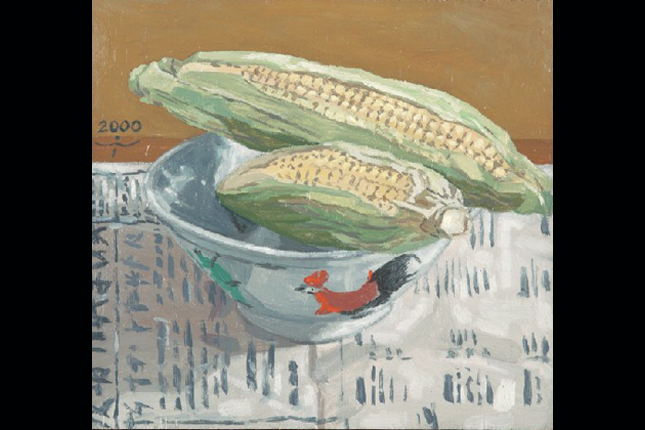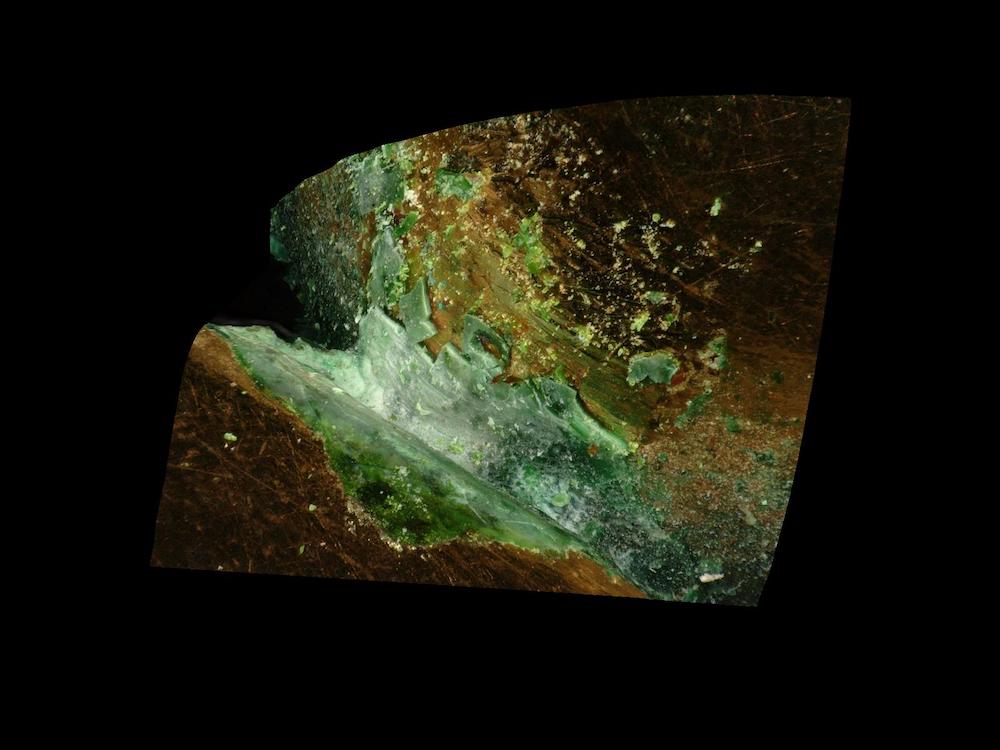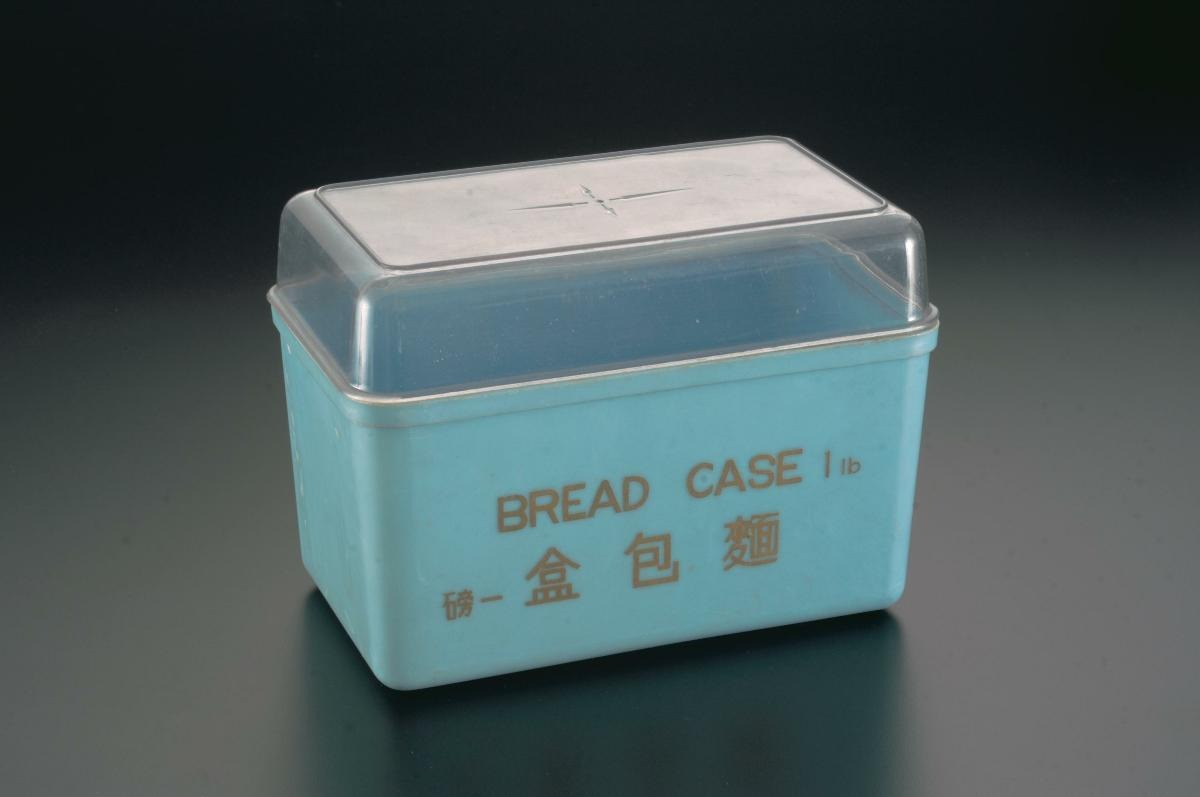This stem dish with a pedestalled foot has a tiered cover, a wide flange at the mid-section and a band of incised cross-hatching around the lower shoulder. It is covered in a pale green glaze on the exterior.Khmer ceramics have a variety of distinctive forms. However, only two types of glazes were used. One was thin, pale green, usually translucent and finely crazed while the other varied from chestnut brown to olive-green and black and always mottled. Sometimes these two glazes were used on one piece.Excavations have shown the earliest glazed ceramics appeared by the end of the ninth century but gradually diminished after an abundance in the 12th century. By the 14th century, they seem to have disappeared altogether. It is thought unlike the ceramics produced elsewhere in Southeast Asia, Khmer pottery was usually produced more for local use rather than for export.




